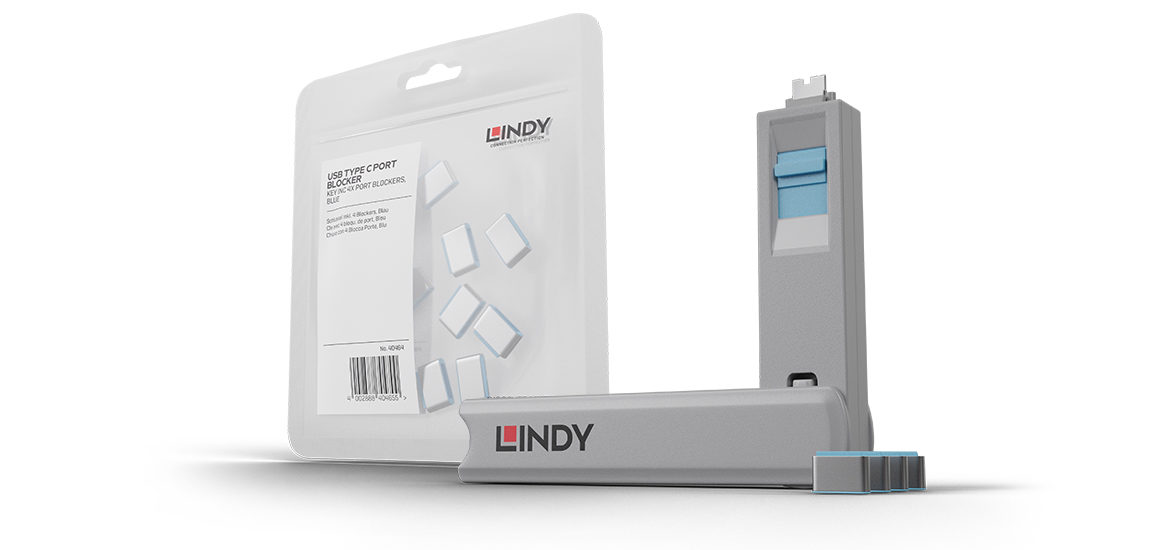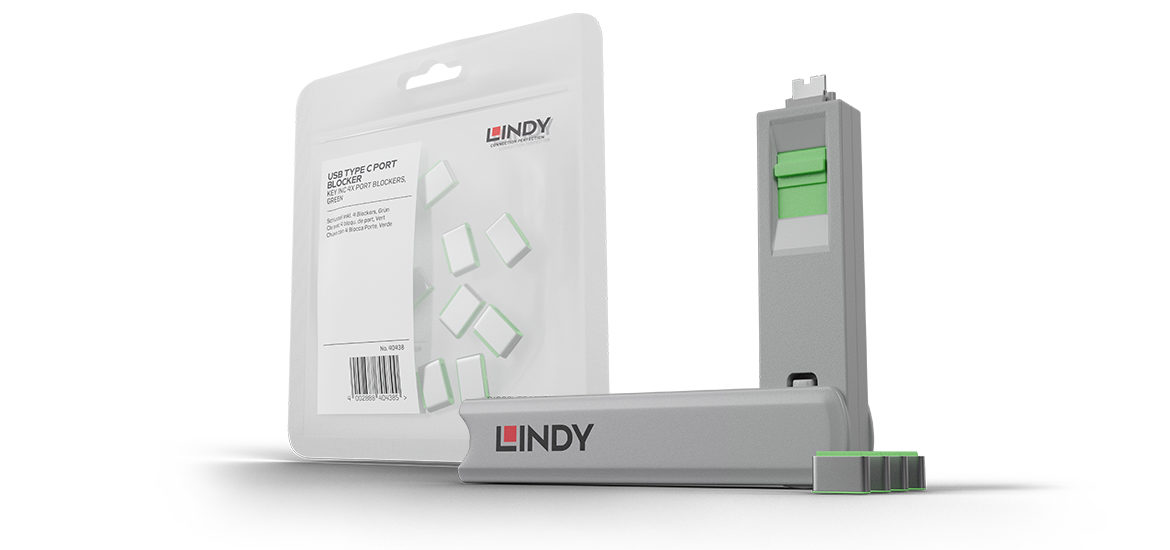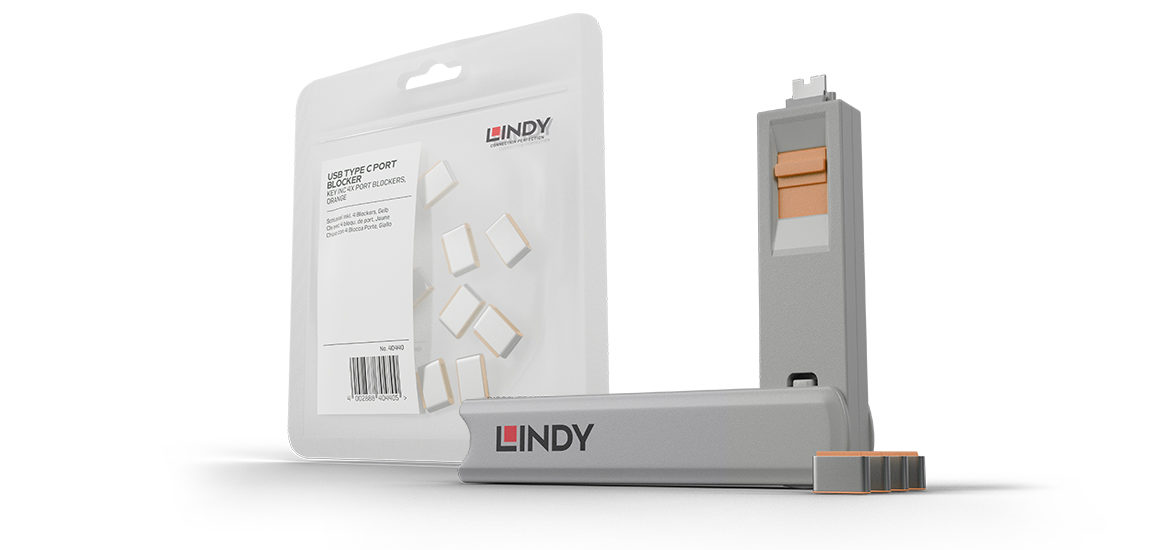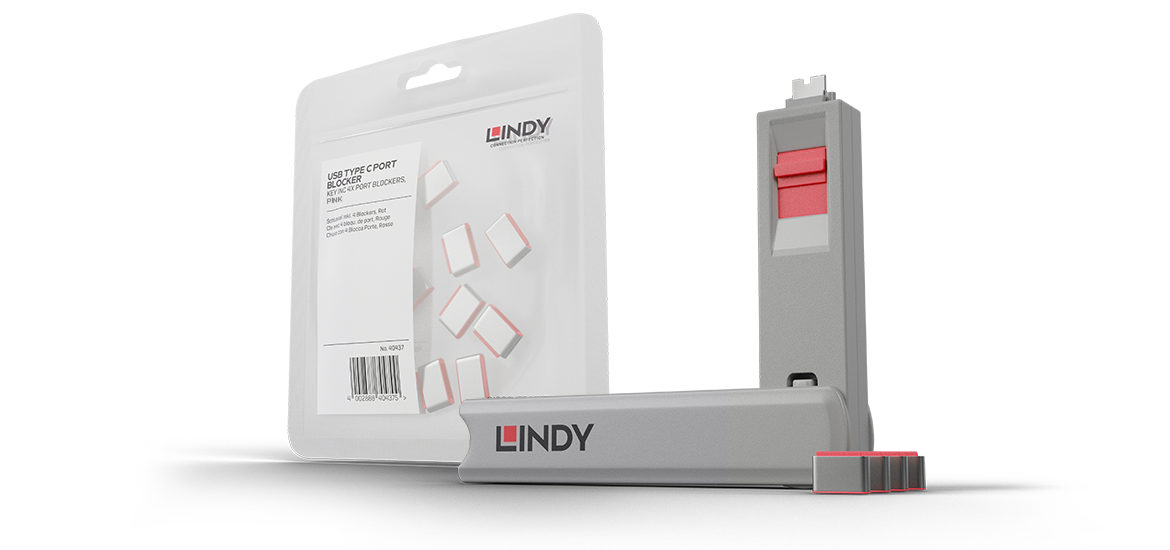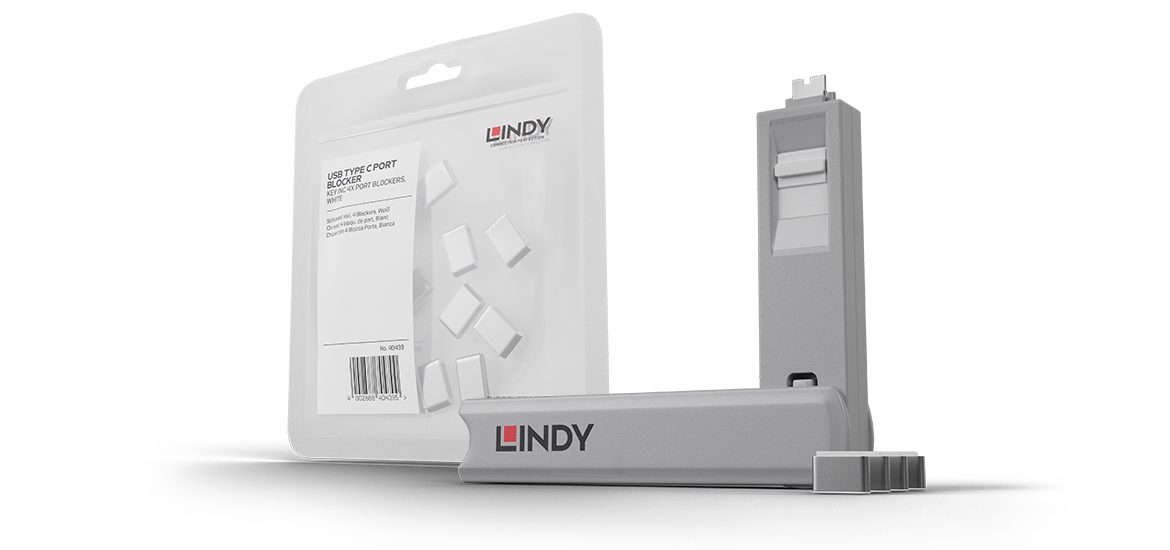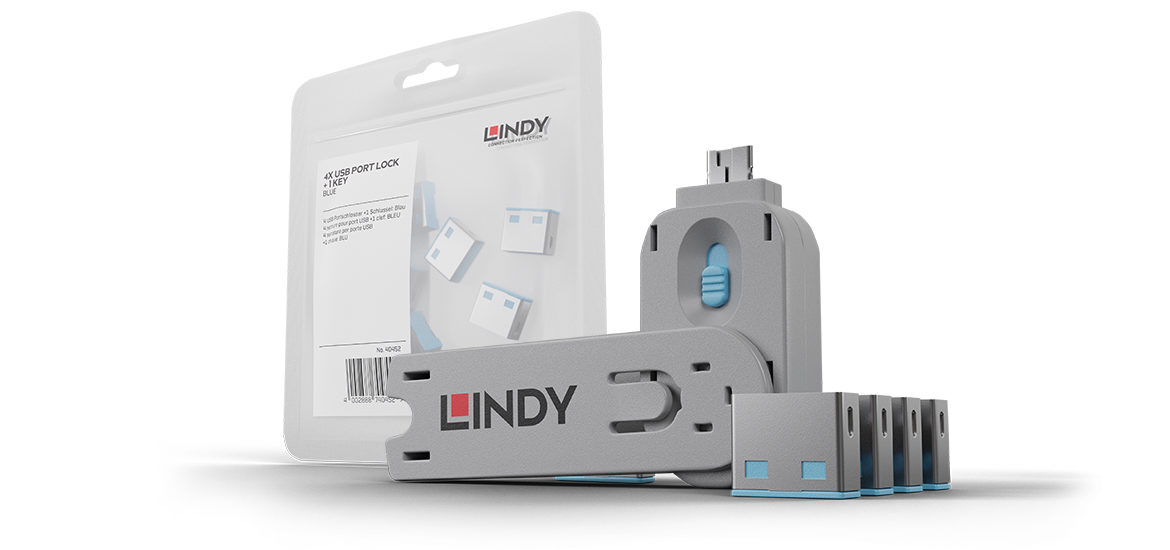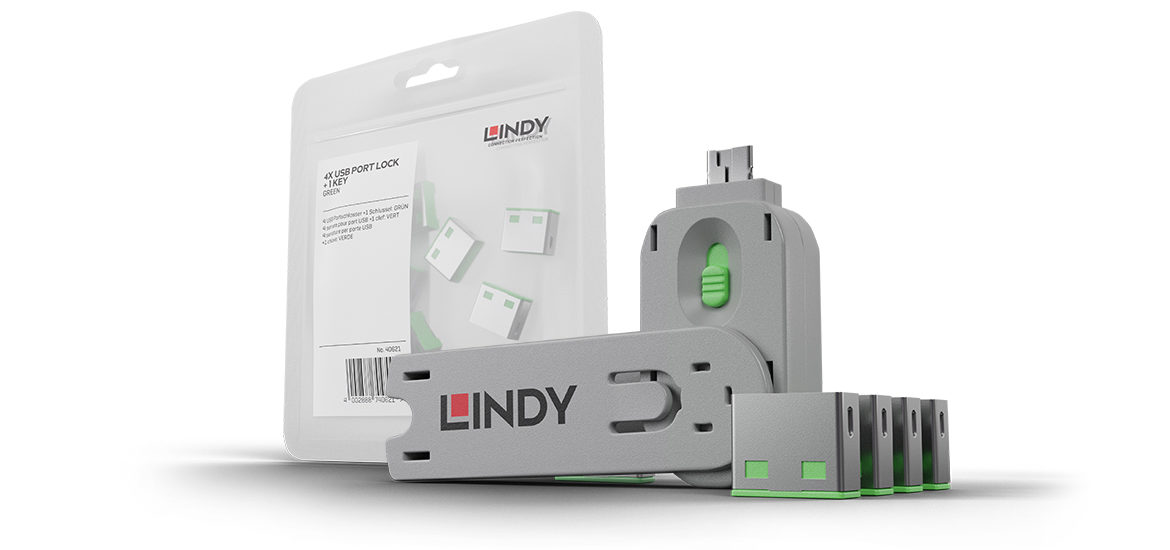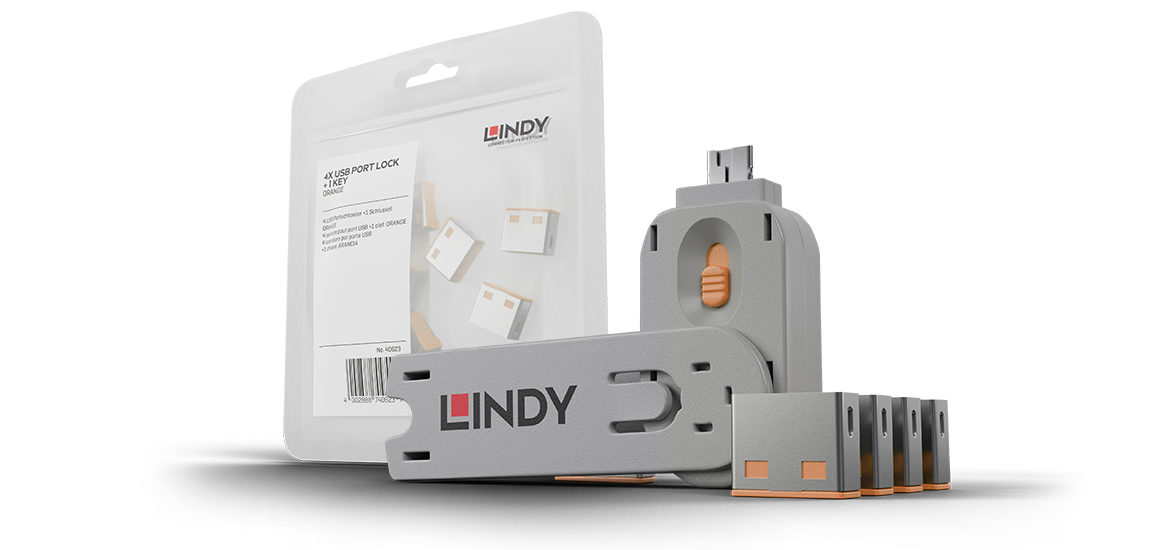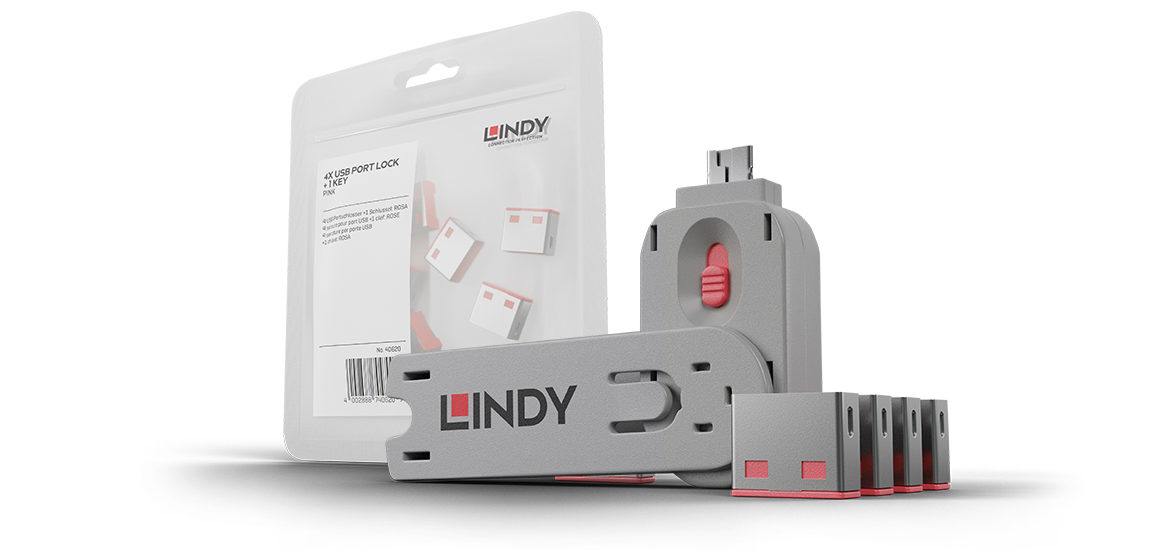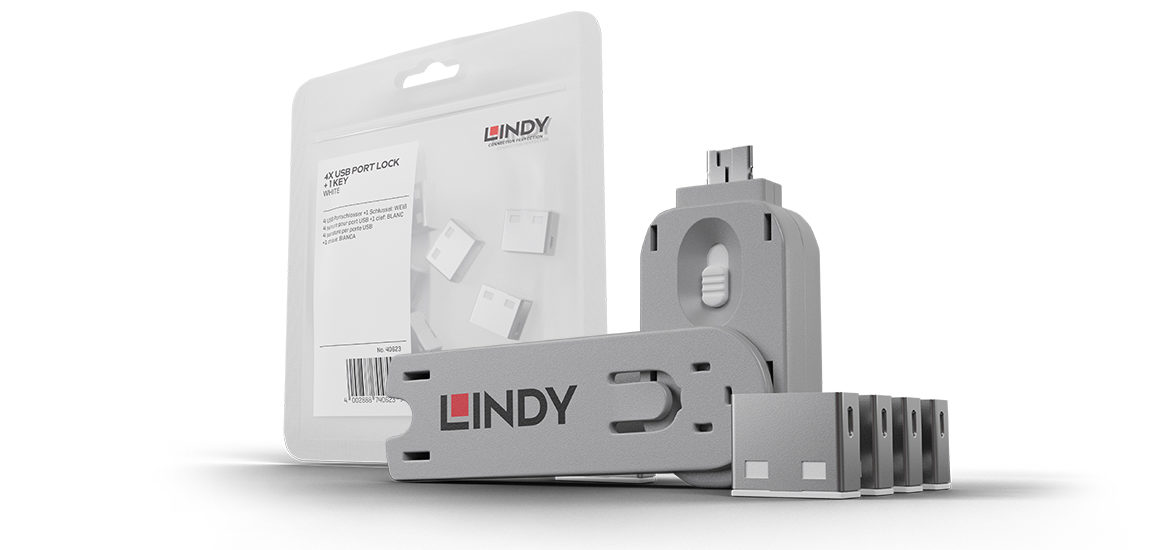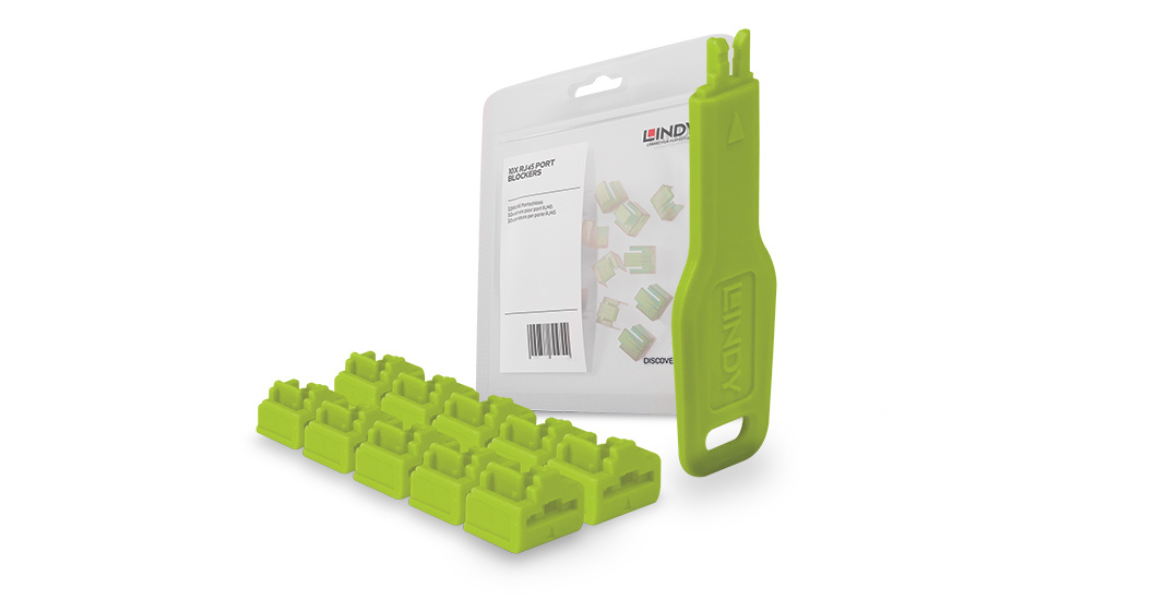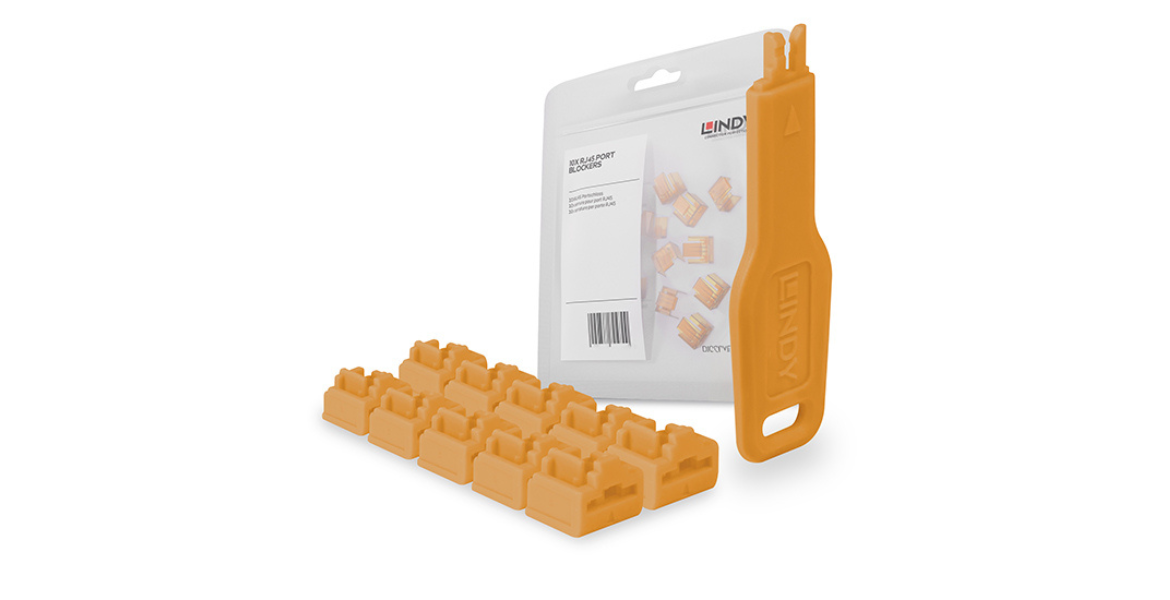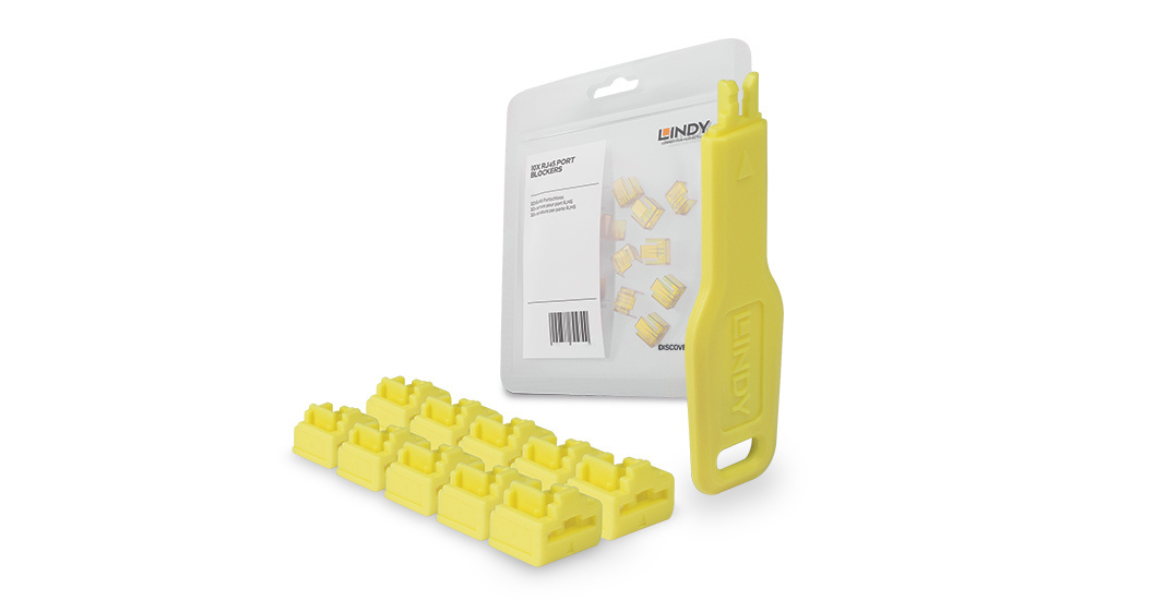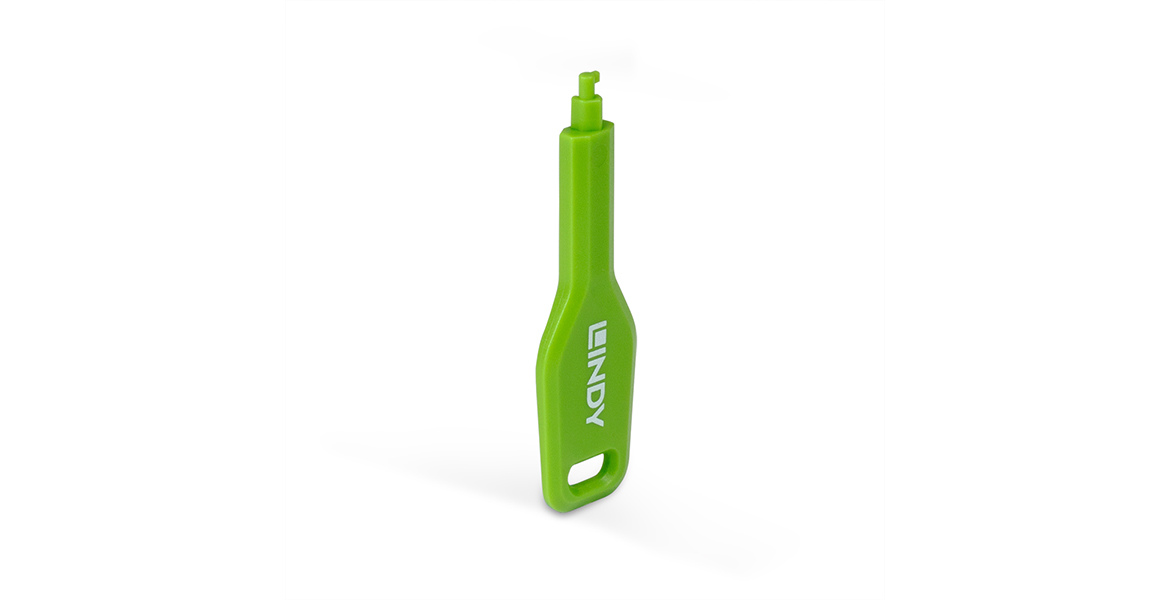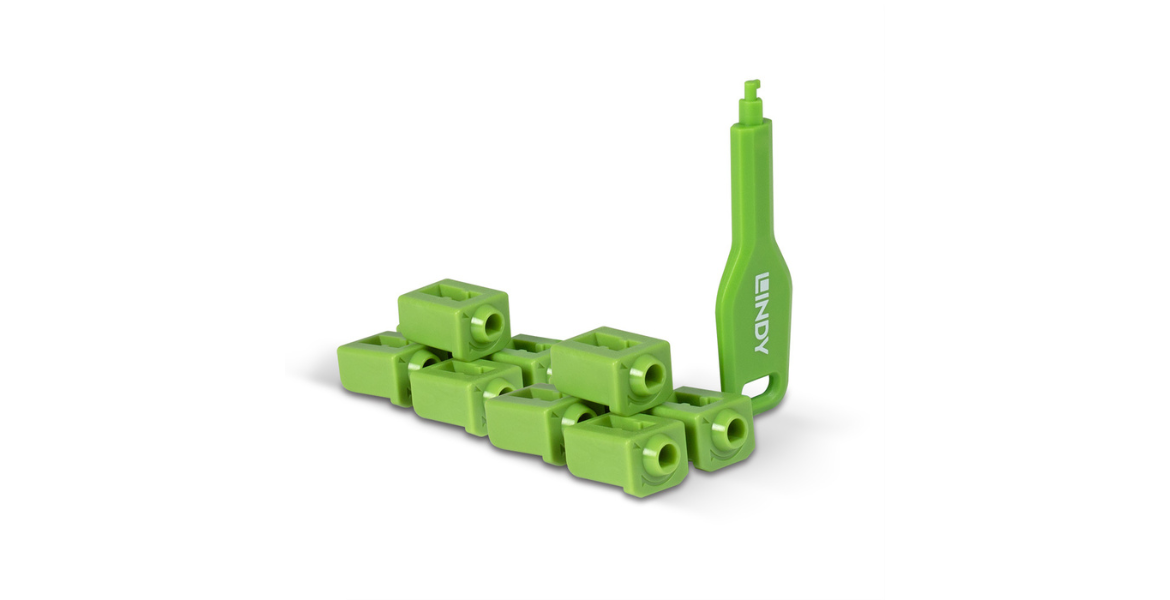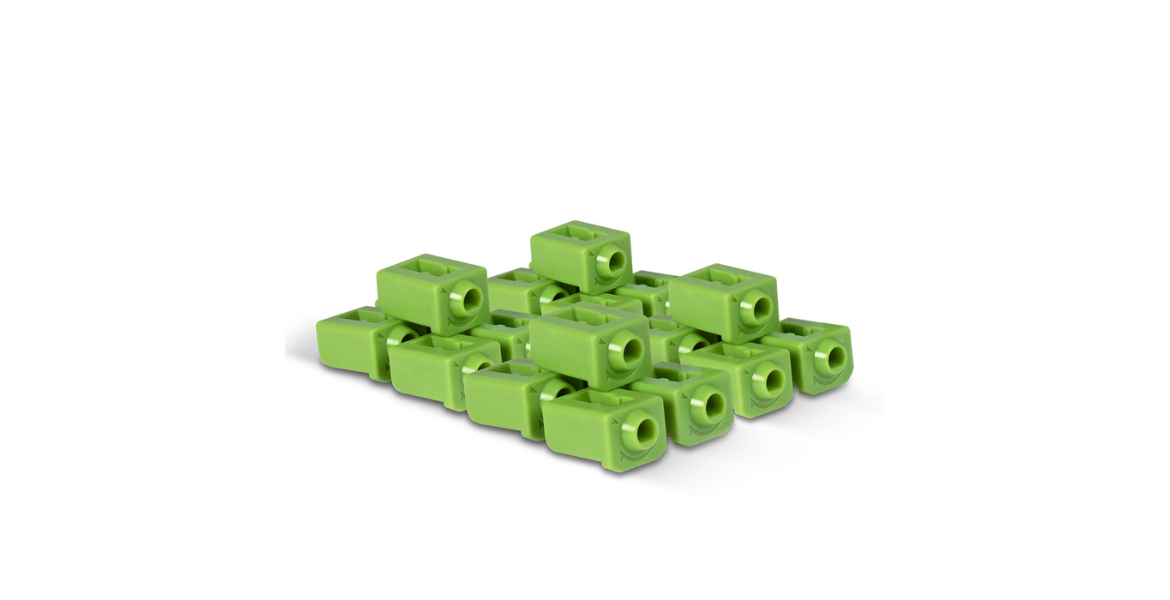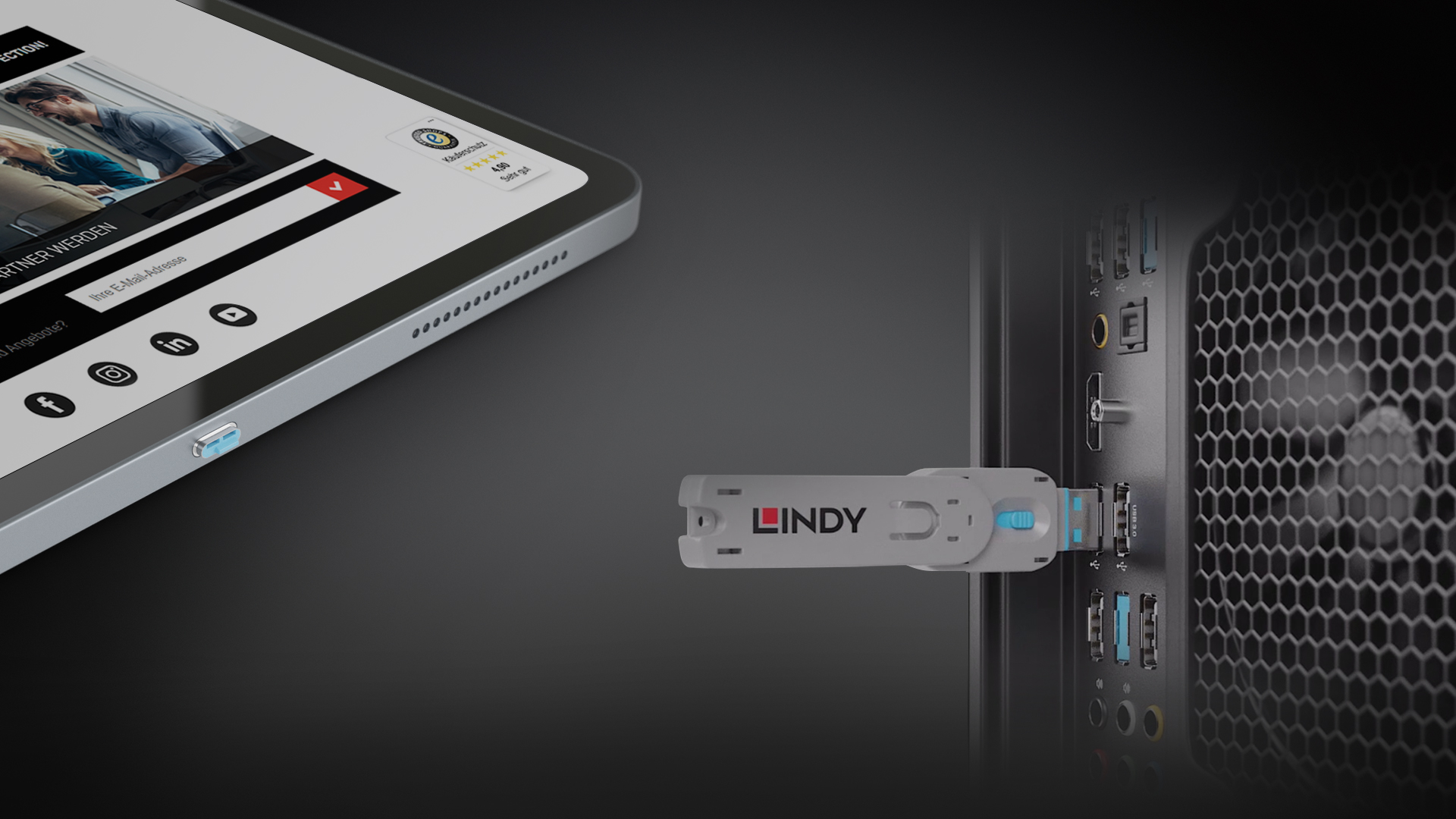
Port Blockers
Protect. Prevent. Preserve.
PHYSICAL FIRST LEVEL SECURITY SOLUTIONS FOR IT & AV HARDWARE INTERFACES & SYSTEMS
Port blockers are visual deterrents that seamlessly fit into a variety of environments and provide a physical barrier to unauthorised access. They are a scalable, easy-to install solution that meet the requirements of any environment, from the smallest businesses, to multinational corporations.
oUR RANGE OF SECURITY SOLUTIONS
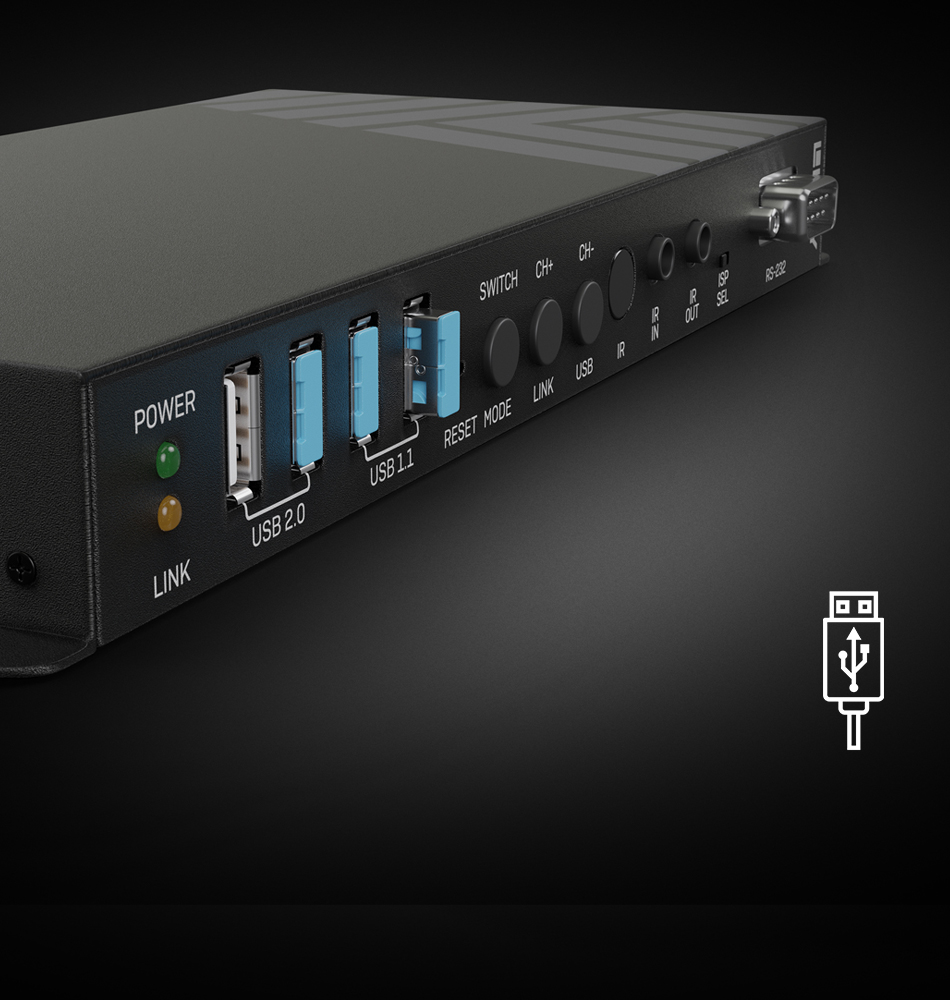
USB TYPE A
DISCOVER MORE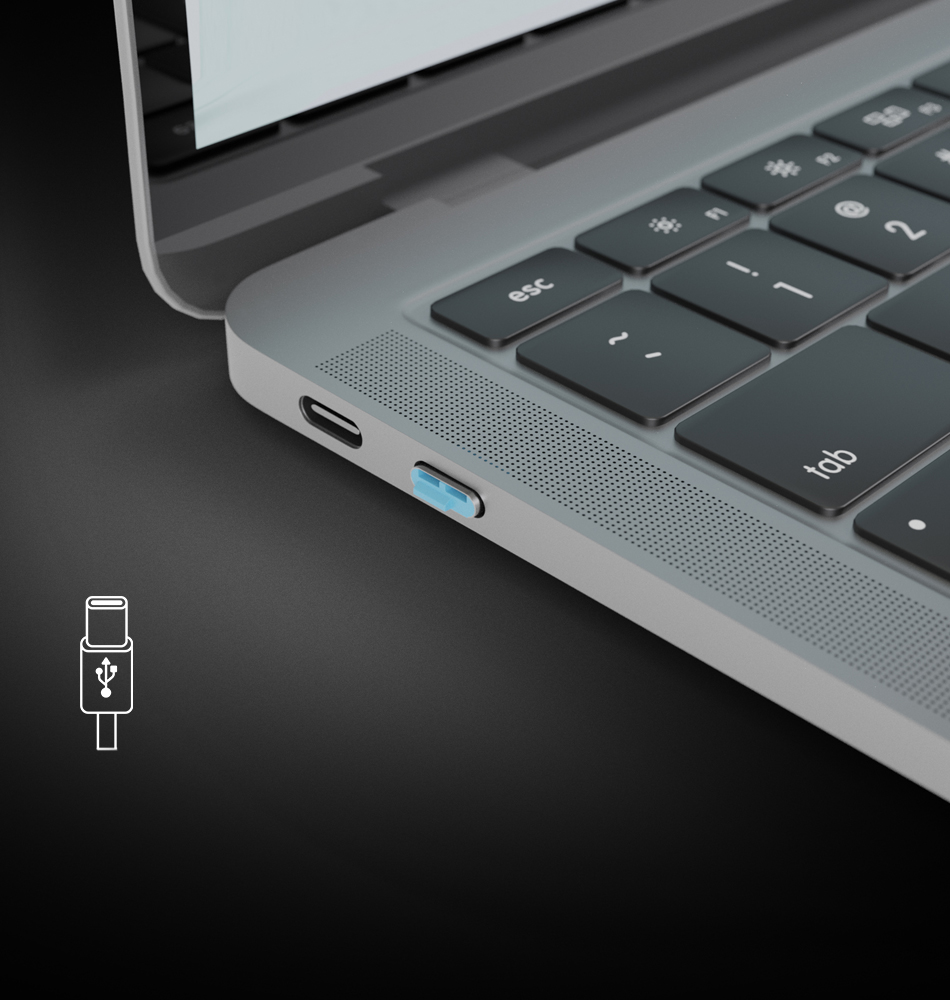
USB TYPE C
DISCOVER MORE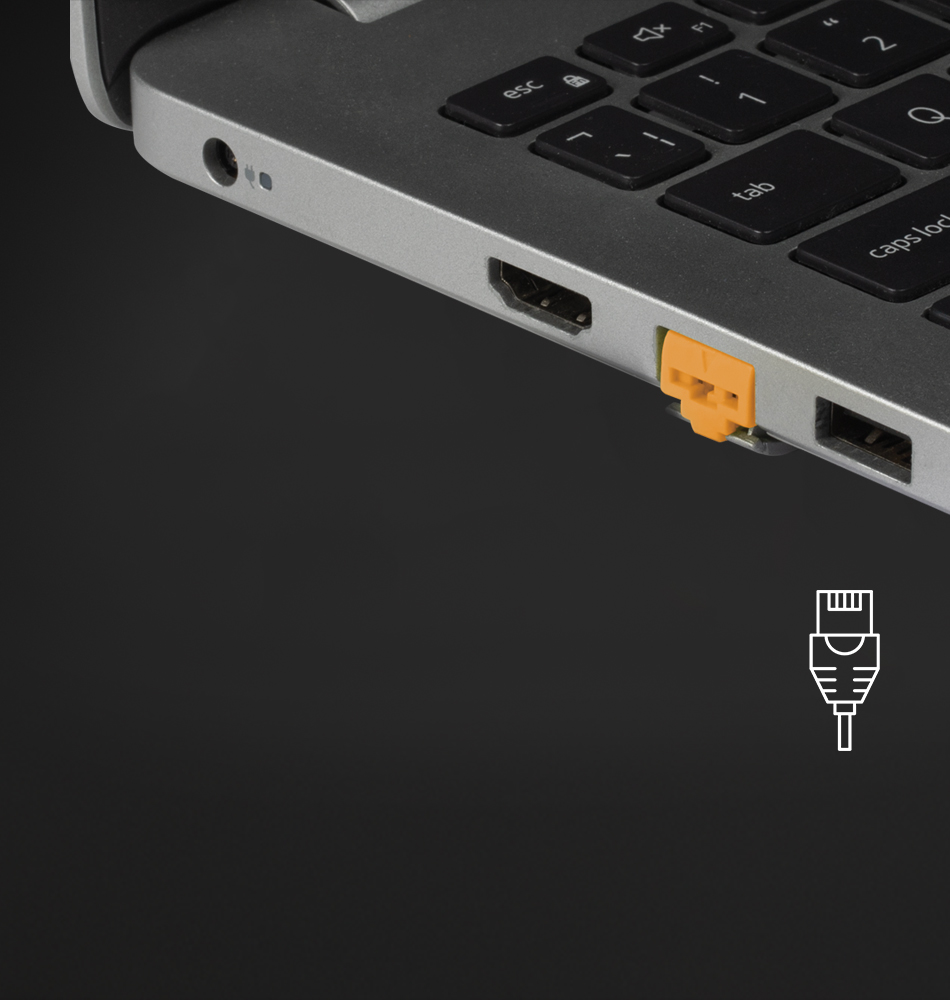
RJ45
DISCOVER MORE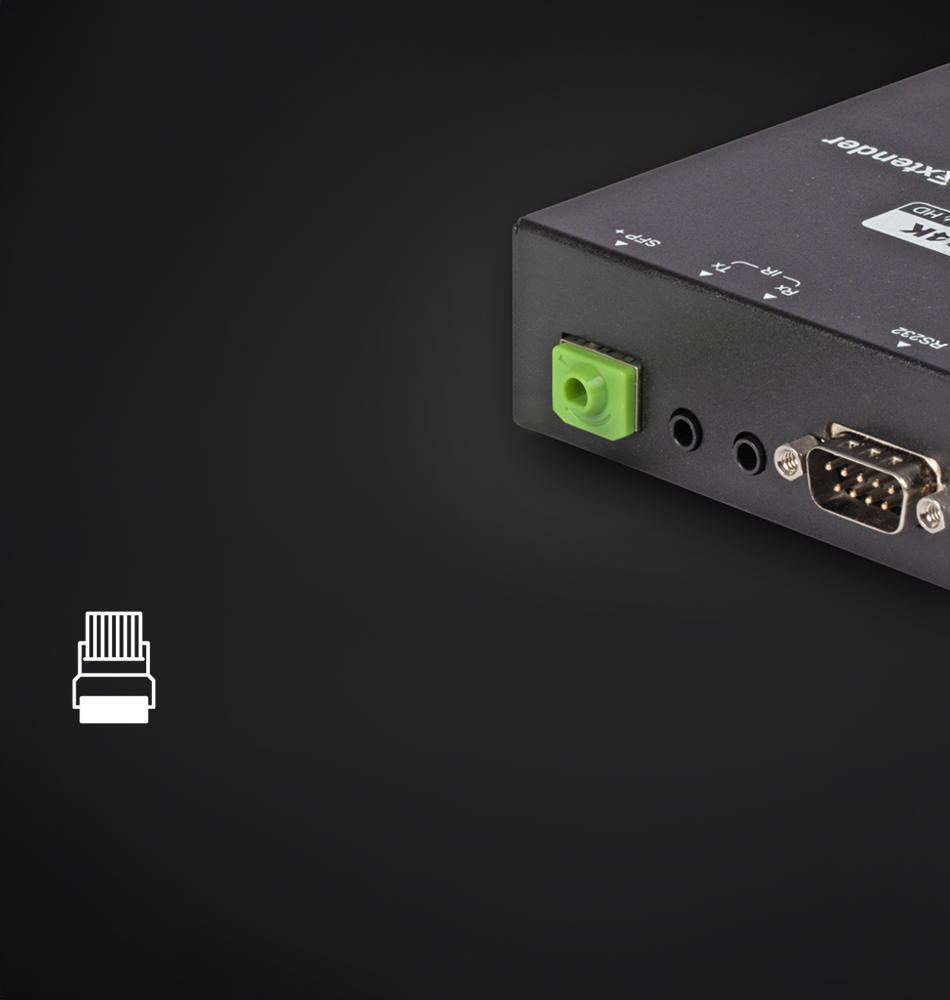
USB TYPE C
The Type C Port Blocker Set allows locks to be inserted and
removed from USB Type C ports. Available as a pack of 10 locks, or as a set of 1 key and 4 locks in a variety of colours.
VIEW OUR RANGE
BUY ONLINEUSB TYPE A
The Type A Port Blocker Set allows locks to be inserted and removed from USB Type A ports. Available as a single key, a pack of 10 locks, or as a set of 1 key and 4 locks in a variety of colours.
VIEW OUR RANGE
BUY ONLINERJ45
RJ45 Port Blockers can be used to easily block open network ports and prevent users from connecting cables, devices or inserting foreign objects without permission. RJ45 ports are ubiquitous in networked environments, by blocking these ports there is a first line of network security against viruses and other compromises. RJ45 ports can also act as a visual cue, showing inactive or disconnected ports.
VIEW OUR RANGE
BUY ONLINESFP
SFP port blockers can lock the slots for SFP modules – for example on network switches – and thus prevent such modules from being plugged in. This offers additional protection, for example, if all free ports of a network switch are already protected with RJ45 port blockers and unauthorised access to the network via the module slots is also
to be prevented. Available as a pack of 20 locks, or as a set of 1 key and 10 locks.
VIEW OUR RANGE
BUY ONLINE
DATA SECURITY SOLUTIONS
THE BENEFITS OF PHYSICAL DATA PROTECTION
Data security solutions provide users with the tools to help prevent security compromises and deter unauthorised users from accessing ports that provide essential functionality to an application or store sensitive data that needs to remain confidential or secure.
There are a variety of ways to secure data digitally: like firewalls, anti-virus programs and bespoke security software, however physical blockers can be just as important in keeping data safe from compromise.
STRENGTHEN
SECURITY
Port blockers serve as a great visual deterrent for threats to data. Plug these simple devices into a corresponding port and stop unauthorised users from inserting devices that could compromise security or data.
USER
FRIENDLY
Quick and easy deployment allows multiple ports to be blocked and managed easily by system administrators. No training or software is required for installation and once installed the port blockers require virtually no maintenance.
EFFICIENT
& SCALABLE
Low installation costs facilitate gradual deployment across an installation as budget allows. With virtually no maintenance costs and additional keys and locks available, these devices provide almost unlimited scalability.
SECURITY
IN DEPTH
Combined with software solutions such as specialist programs and BIOS restrictions, port blockers provide an added layer of defence against data theft and compromises.
APPLICATION EXAMPLES
USB TYPE C
Protect laptops from unauthorised access in workplaces.
Prevent tablets that are left in public environments, e.g. points of sales and classrooms, from being plugged in by unauthorised third parties.
USB TYPE A
Block ports on office PCs to help label unused ports or deny access.
Block access to USB ports on professional AV and IT systems, e.g. servers, matrices and switches.
RJ45 PORTS
Denies user access to Ethernet ports on desktop PCs in work-places and schools.
Mark RJ-45 ports on network switches
to show deactivated or inactive ports.
SFP PORTS
Locks ports for SFP modules and thus prevents such modules from being plugged in. This provides additional protection, especially if unauthorised access to the network via the module slots is to be prevented.
